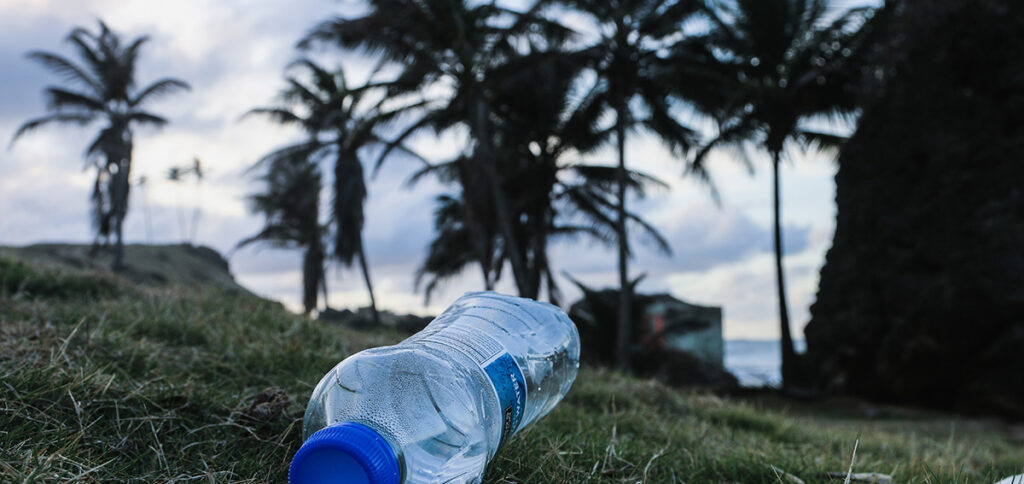Evolution of Australia’s beverage industry and its impact on PET use

In the past few years, Australia’s beverage industry has seen a significant trend away from sugar-sweetened soft drinks. This downturn follows the worldwide demand for low- and no-sugar drink alternatives. This trend – as well as the current Covid-19 pandemic – has a massive impact on the country’s PET use.
When looking at carbonated and non-carbonated soft drinks, the trend does not change visibly in terms of the general sales figures, and this can be explained by a trend-based shift of drink types within the sector. Where sugar-sweetened beverages are losing sales, consumers are now reaching more frequently for functional, sports, diet or sugar-free drinks, so that the absolute sales figures for PET, glass and can packaging are changing only marginally.
How Australia’s beverage industry has changed
Australia relies on cans for carbonates and consumer purchases remain consistently steady. Carbonates are found more than twice as frequently in cans as in PET bottles. According to Euromonitor, can sales increased in the 2017-2019 period by around one percent, while PET bottle sales fell by almost 2.5 percent. According to Statista, consumption in this period remained at a constant level of 3.5 billion liters. Juices have also remained stable over recent years with around two percent sales growth on an average of 433 million liters. Here, growth of 1.6 percent in drinks cartons has recently been noted, while PET lost around three quarters of a percent.
Things look very different for water: in the same period, sales in item numbers rose by almost 17 percent from 942 million to 1.100 billion. Particularly in the Nutrients long-term study, the annual per head volume sales moved drastically from almost 6 l in 1997 to around 48 l in 2018, with a sharper increase from 2012. PET has yielded a significant share of growth related to packaging at 18 percent; in 2019, the sales share of PET water bottles was 974 million units but without a notable change in sales in liters (average 737 million liters).
Australia’s beverage industry has been dominated for over ten years by two production giants, Coca-Cola Amatil and Asahi. In 2020, the two companies together hold over 50% of the market with around 40% going to Coca-Cola and 15% to Asahi. Behind them are Tru Blu Beverages, Bundaberg Brewed Drinks and Nexba.
This can be attributed to increasing interest in smaller containers and is all under caveat, since the statements from the research platform Ibis World, deviate from the growth figures. While Euromonitor measured a sales increase rate of around 6 percent in the 2018 to 2019 period, ABCL and Ibis World are assuming growth of below one percent and, because of the pandemic, even lower.
The reality will lie somewhere in between, but there is significant uncertainty in the picture. Taking into consideration any effects of the coronavirus, the 2020 sales of non-alcoholic beverages with soft drinks at their core should be a little over US $ 13.5 billion and should grow by 2025 to US $ 17 billion, according to Statista. There is (still) no market for PET for alcoholic drinks like beer and spirits.
Covid-19 and its impact on Australia’s beverage industry
ABCL’s CEO Geoff Parker anticipates a Covid-19-related downturn in small water bottles because of the restrictions for outdoor events, while panic-buying of water bottles in supermarkets would increase. “Broadly, there is a high degree of uncertainty in the landscape caused by Covid-19 and the challenges that pervade,” explained Parker, speaking of the entire sector. “Despite an increase in at-home food consumption, consumers are likely to shift to cheaper alternatives, such as private-label drinks, due to declining discretionary income resulting from Covid-19. This is likely to reduce profit margins for industry players.” In line with the changes, there is also an expectation that drinks producers will rethink their processes, also with regard to supporting suppliers and logistics.

“The industry’s supply chain is diverse, from local and imported ingredients to R&D laboratories, transportation, logistics, materials handling, plant and equipment, and much more. As we convey to governments the importance of drinks manufacturing, we are also emphasizing the end-to-end supply chain that is critical to supporting core operations. The industry relies on quality Australian produce and expertise right across the supply chain,” says Parker.
As in other countries, irregular purchasing behavior from consumers had an effect on overall availability. “Over the last few months, we have witnessed significant changes in purchasing behavior across the country, including in Victoria. March was characterized by panic buying followed by stockpiling in April and May, and a return to some degree of normality for many in June and early July.”
You will learn more about Australia’s or other beverage industries at drinktec, which will be held from September 12 to 16, 2022, in Munich. Would you also like to showcase your innovations in this area? Join us at the next drinktec.
